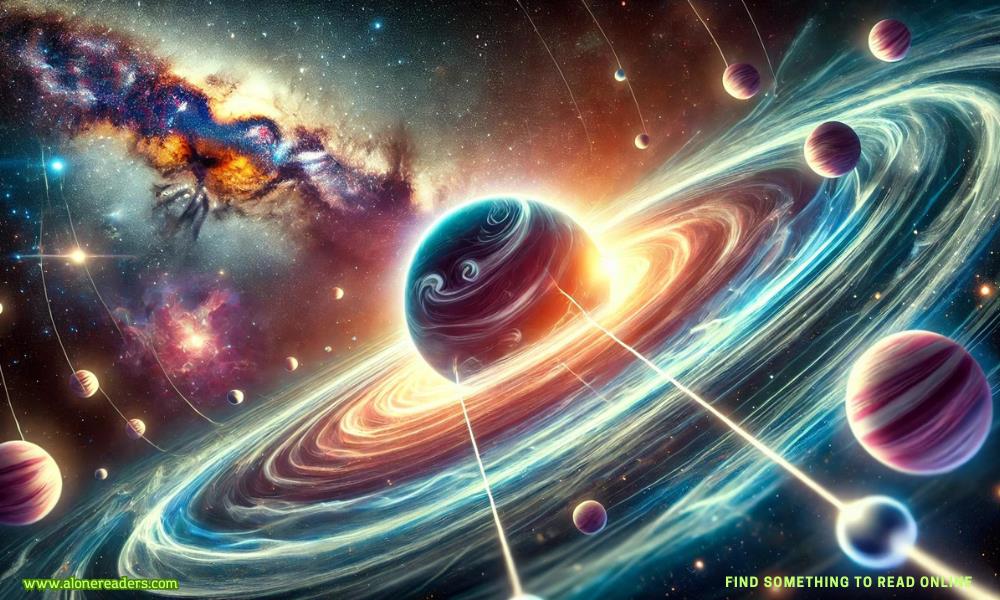
Gravity is one of the most fundamental forces in our universe, yet it remains one of the most mysterious. Its influence is ubiquitous, affecting everything from the motion of celestial bodies to the way we move on Earth. The concept of gravity has intrigued scientists and philosophers for centuries, and despite our advances in understanding, many questions still remain.
The story of gravity begins with Sir Isaac Newton, whose laws of motion and universal gravitation laid the groundwork for classical mechanics. Newton's law of universal gravitation states that every mass attracts every other mass in the universe with a force that is proportional to the product of their masses and inversely proportional to the square of the distance between their centers. This simple yet profound equation explained why apples fall from trees and how planets orbit the Sun.
Newton's laws were revolutionary, providing a framework that could predict the behavior of objects under the influence of gravity with remarkable accuracy. His work showed that the same force governing the fall of an apple also governed the motion of planets, moons, and stars. However, Newton's theory, while incredibly powerful, was not complete. It described gravity as a force acting at a distance, but it did not explain how this force was transmitted through space.
Enter Albert Einstein, whose theory of general relativity redefined our understanding of gravity. Einstein proposed that gravity is not a force in the traditional sense but rather a curvature of spacetime caused by mass and energy. According to general relativity, massive objects like the Sun warp the fabric of spacetime, creating a "well" that other objects fall into. This curvature affects the paths of objects, causing them to move in what we perceive as gravitational attraction.
Einstein's equations were complex, but they provided explanations for phenomena that Newton's laws could not, such as the precession of Mercury's orbit and the bending of light by gravity. General relativity predicted the existence of black holes, regions of space where gravity is so intense that nothing, not even light, can escape. These predictions have been confirmed by numerous observations and experiments, cementing general relativity as a cornerstone of modern physics.
Despite these advancements, gravity remains enigmatic. For instance, general relativity and quantum mechanics, the two pillars of modern physics, are fundamentally incompatible. Quantum mechanics governs the behavior of particles at the smallest scales, while general relativity describes the large-scale structure of spacetime. Efforts to unify these theories into a single framework, often referred to as quantum gravity, have so far been unsuccessful.
One of the most promising approaches to quantum gravity is string theory, which posits that the fundamental building blocks of the universe are not point particles but tiny, vibrating strings. These strings can stretch, merge, and interact in ways that might reconcile the principles of general relativity and quantum mechanics. However, string theory is still in its infancy, and much work remains before it can be considered a viable theory of everything.
Gravity also presents practical challenges closer to home. Understanding gravitational interactions is crucial for space exploration and satellite technology. Precise knowledge of gravitational forces allows engineers to plot spacecraft trajectories, ensuring they reach their destinations efficiently. The study of gravity has also led to the development of technologies like GPS, which relies on the accurate measurement of time and distance influenced by gravitational effects.
Moreover, gravity has profound implications for our understanding of the universe's fate. Observations of distant galaxies reveal that the universe is expanding at an accelerating rate, driven by a mysterious force known as dark energy. The interplay between gravity and dark energy will determine whether the universe continues to expand forever, eventually collapses back on itself, or reaches a stable equilibrium.
The mysteries of gravity continue to inspire scientists to probe deeper into the nature of the cosmos. Advanced experiments and observations, such as those conducted with the Laser Interferometer Gravitational-Wave Observatory (LIGO), have opened new windows into gravitational phenomena. LIGO's detection of gravitational waves, ripples in spacetime caused by massive accelerating objects like merging black holes, has provided direct evidence of some of general relativity's most profound predictions.
In summary, gravity is a fundamental force that shapes our universe, from the smallest particles to the largest cosmic structures. The journey from Newton's laws to Einstein's relativity has revolutionized our understanding, yet many mysteries remain. As scientists continue to explore and unravel these mysteries, our comprehension of gravity will undoubtedly deepen, potentially leading to groundbreaking discoveries that could reshape our view of the universe once more.